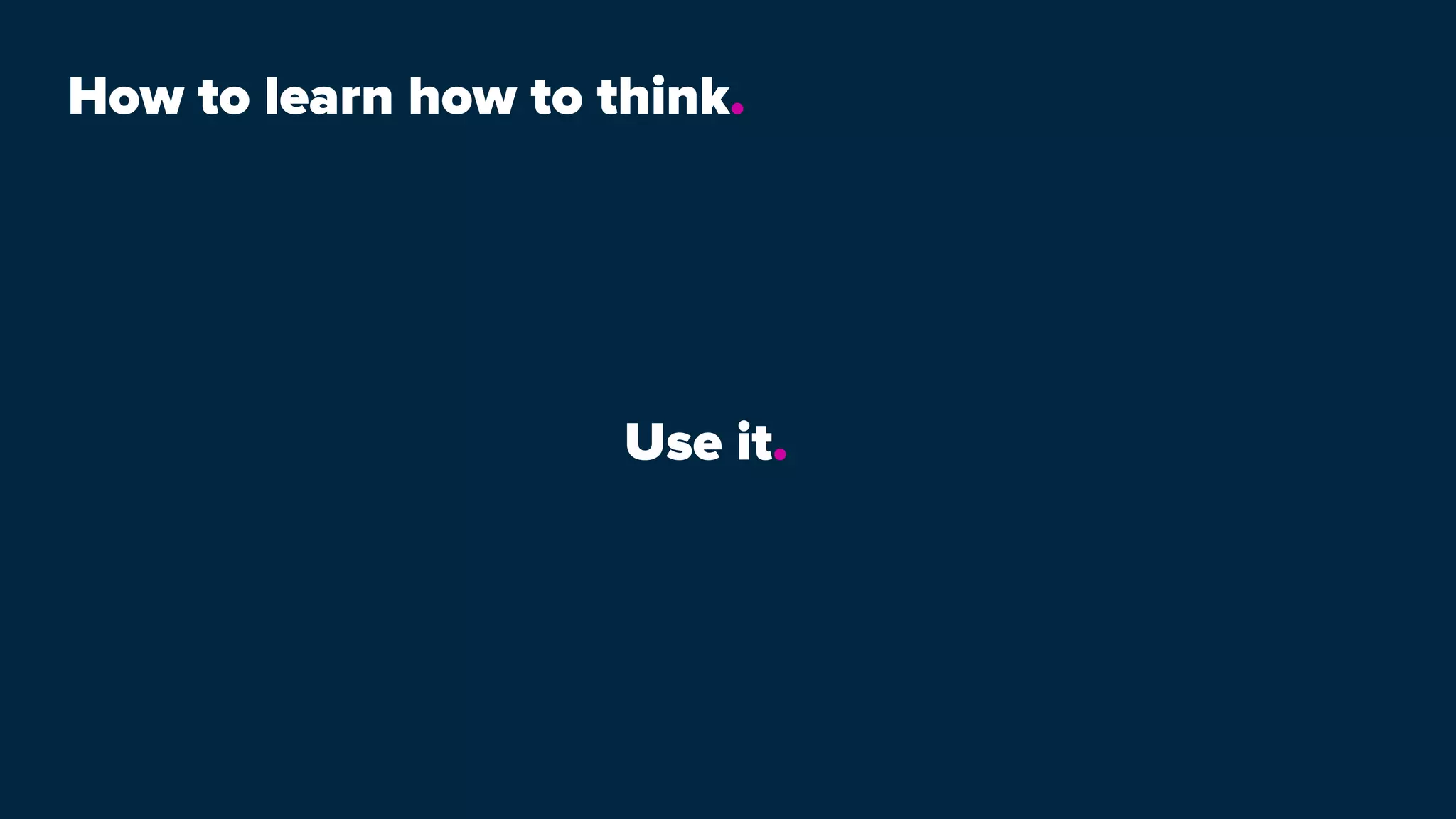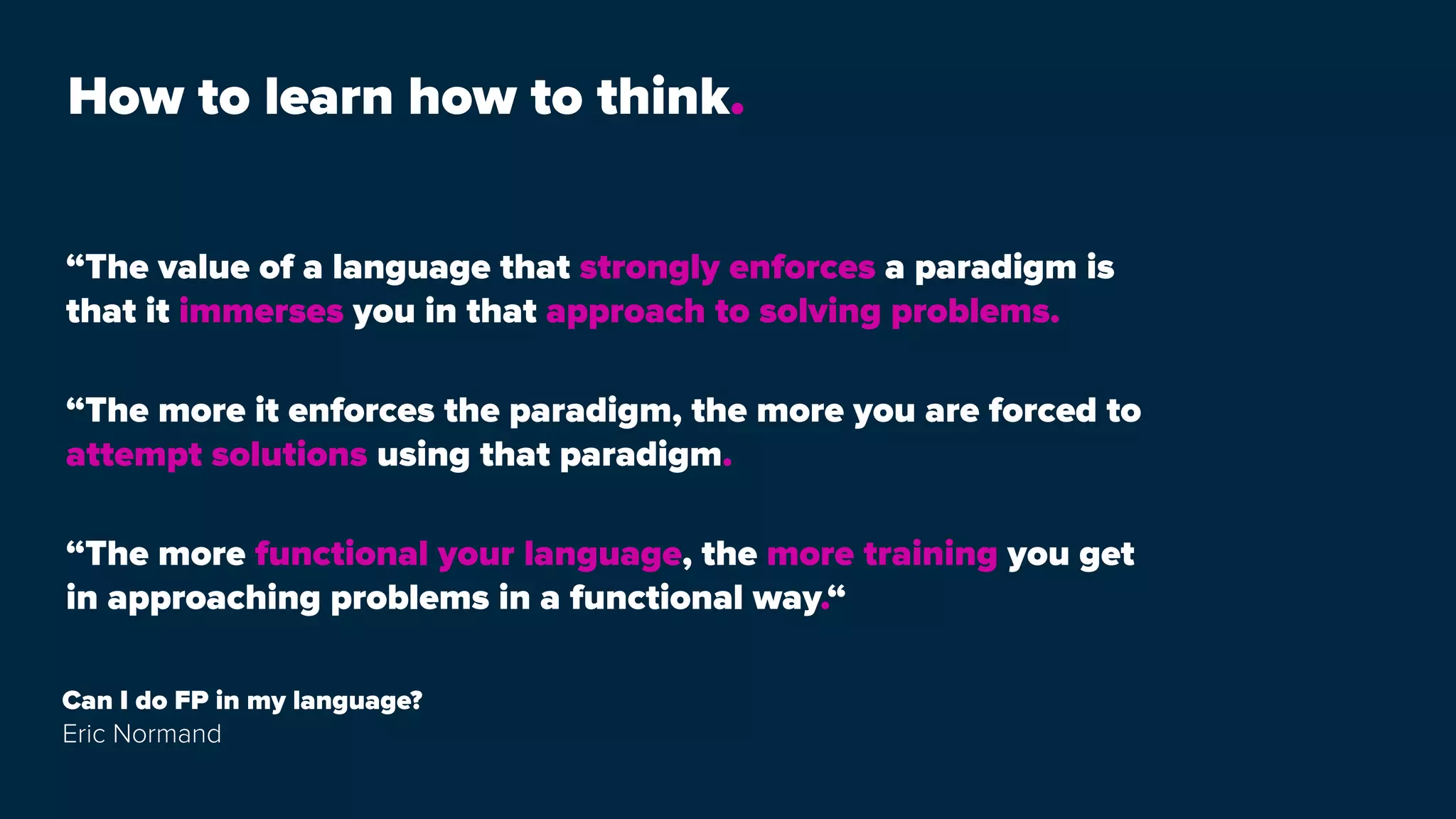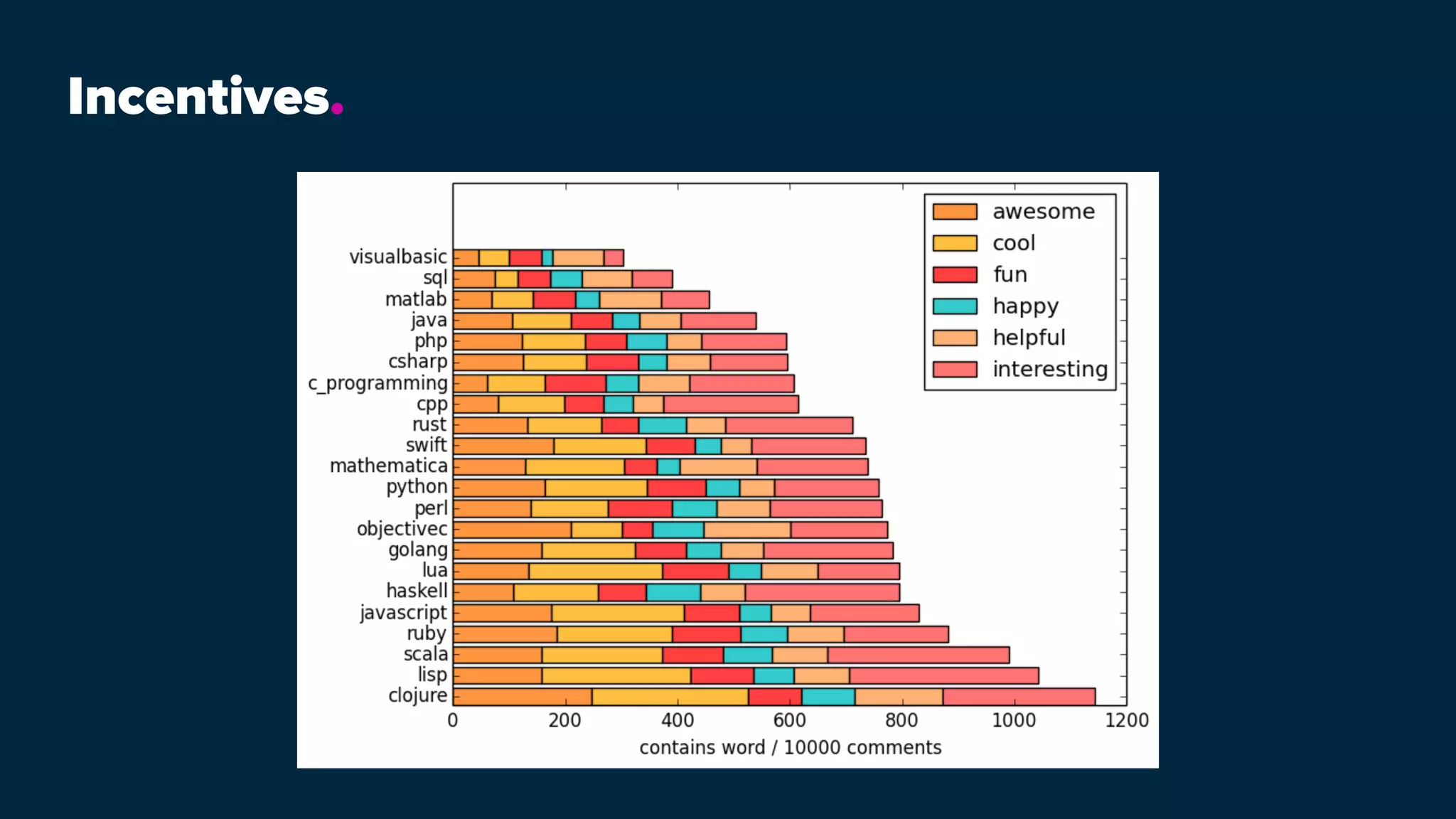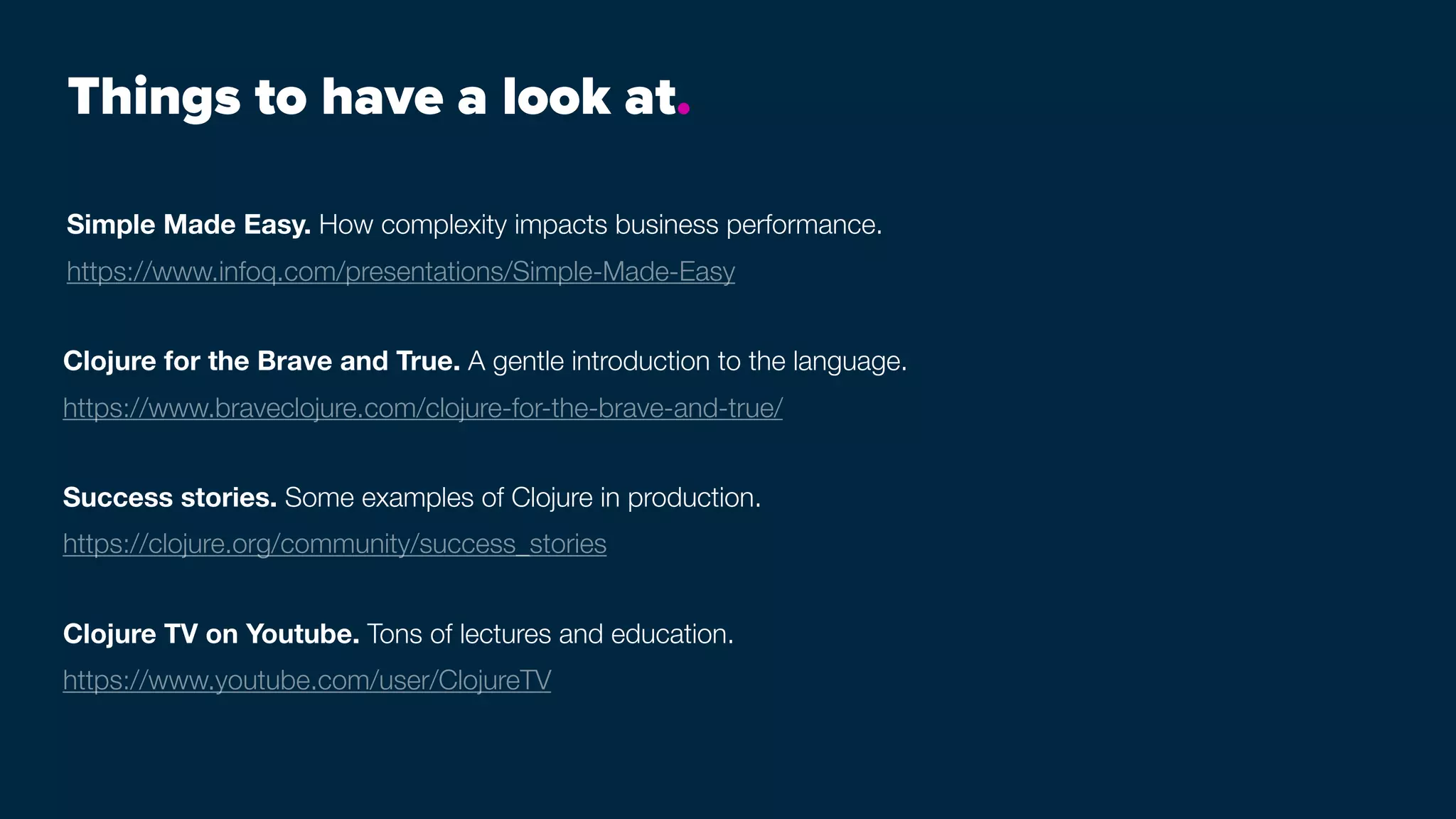This document provides an introduction to functional programming with Clojure. It discusses why functional programming is useful, describes Clojure's features like immutable data structures and concurrency tools. It provides examples of Clojure syntax, data structures, and functions. It also discusses how Clojure can be used for both web and frontend development.
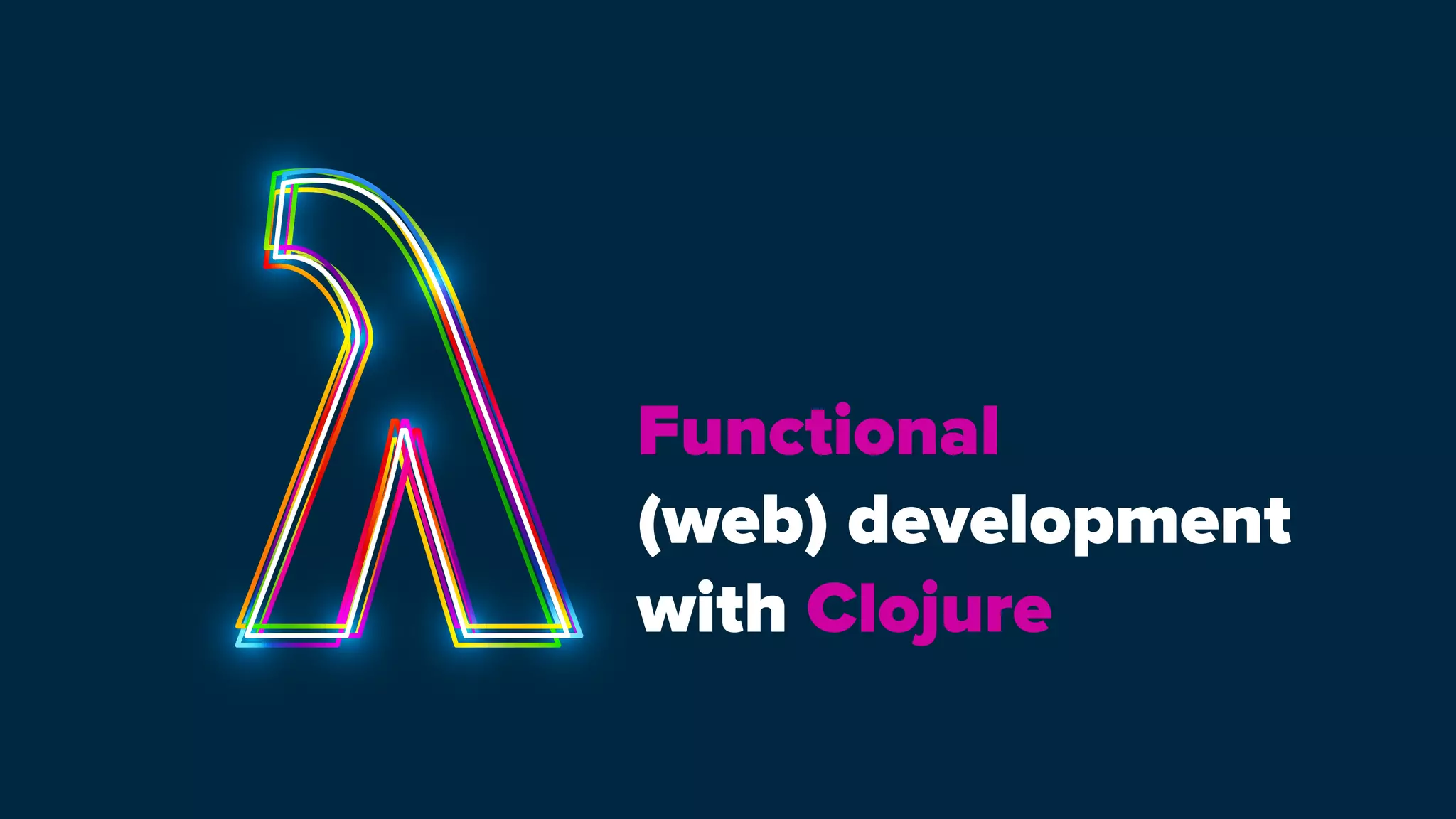
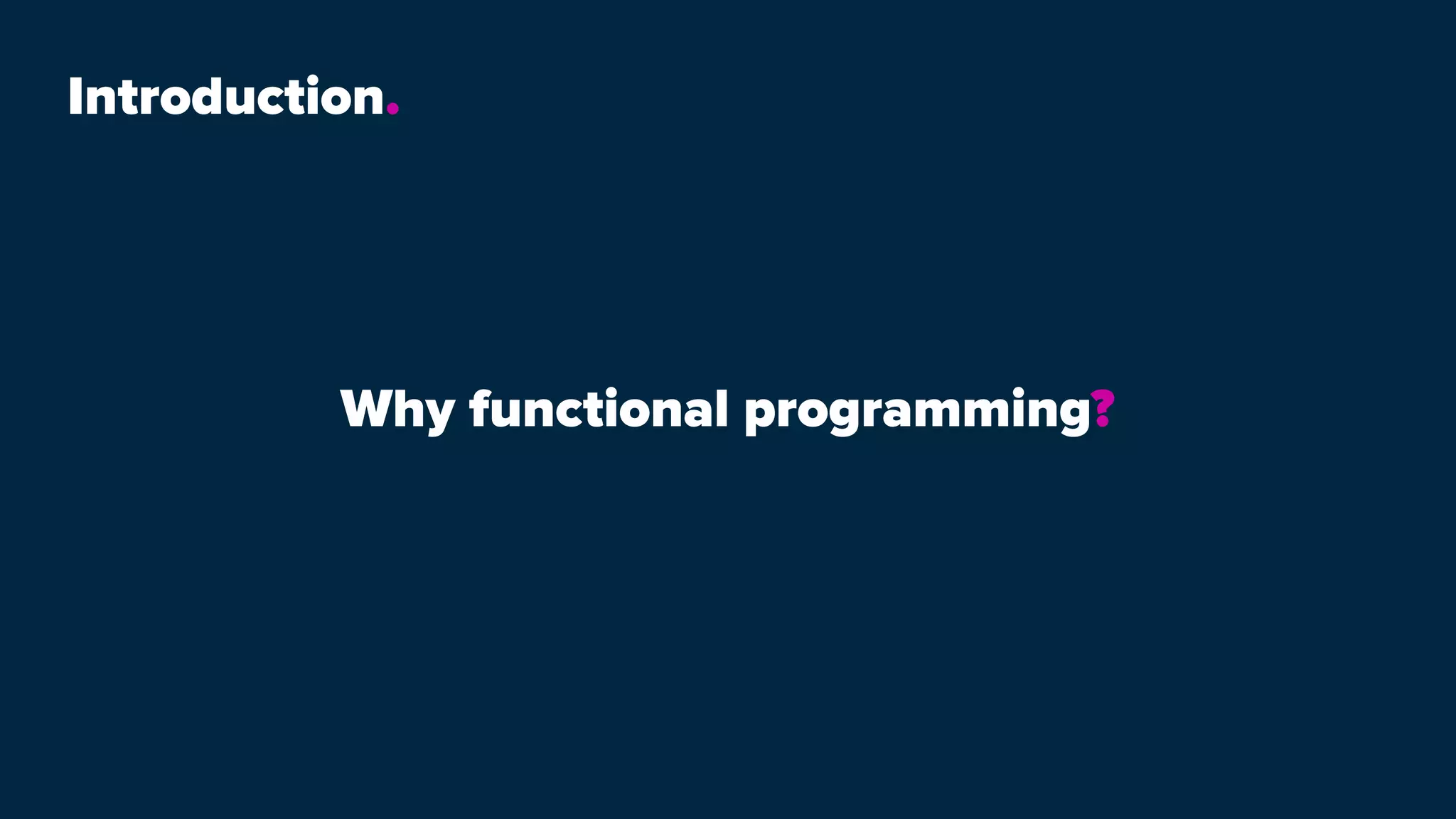
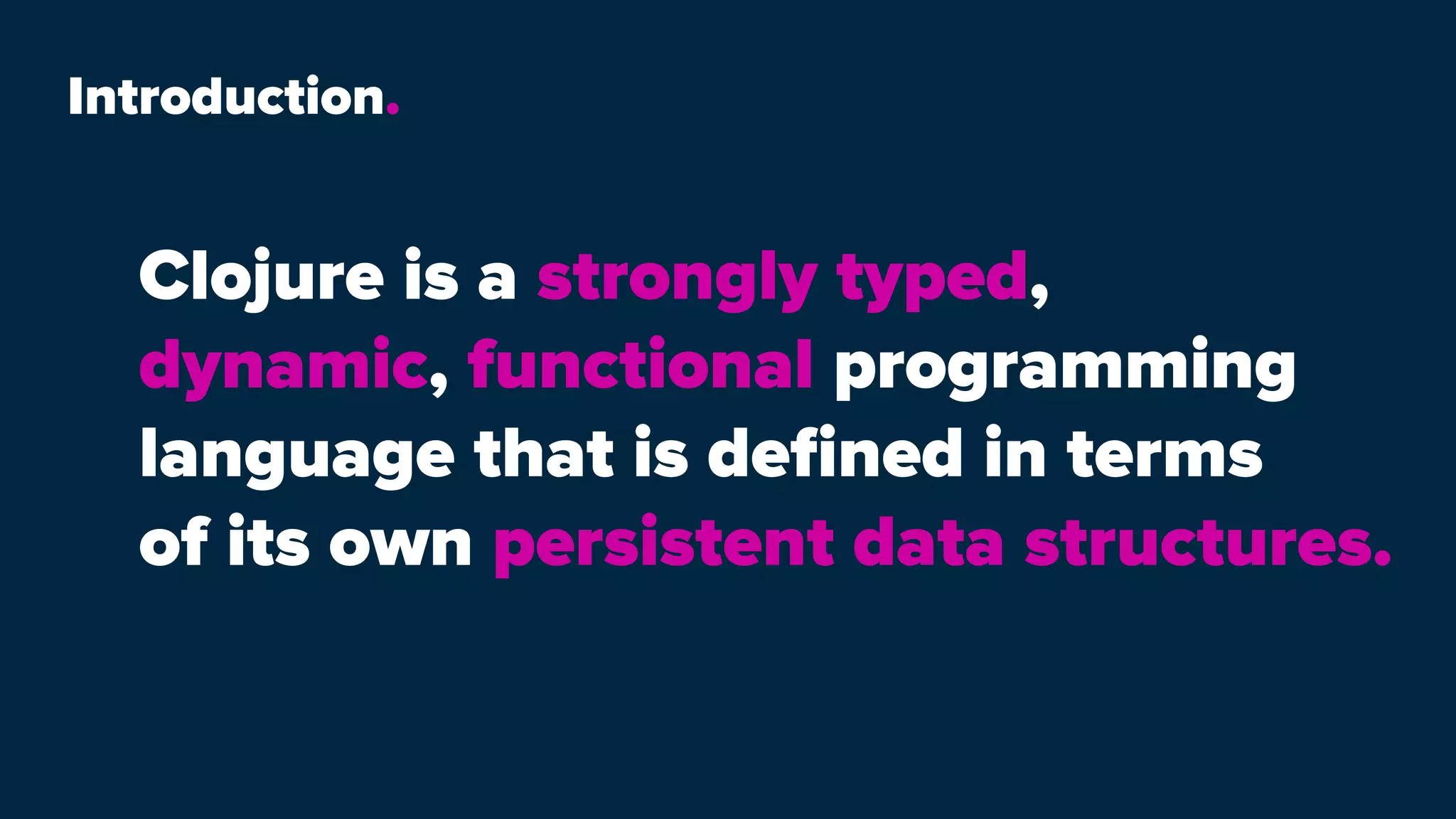
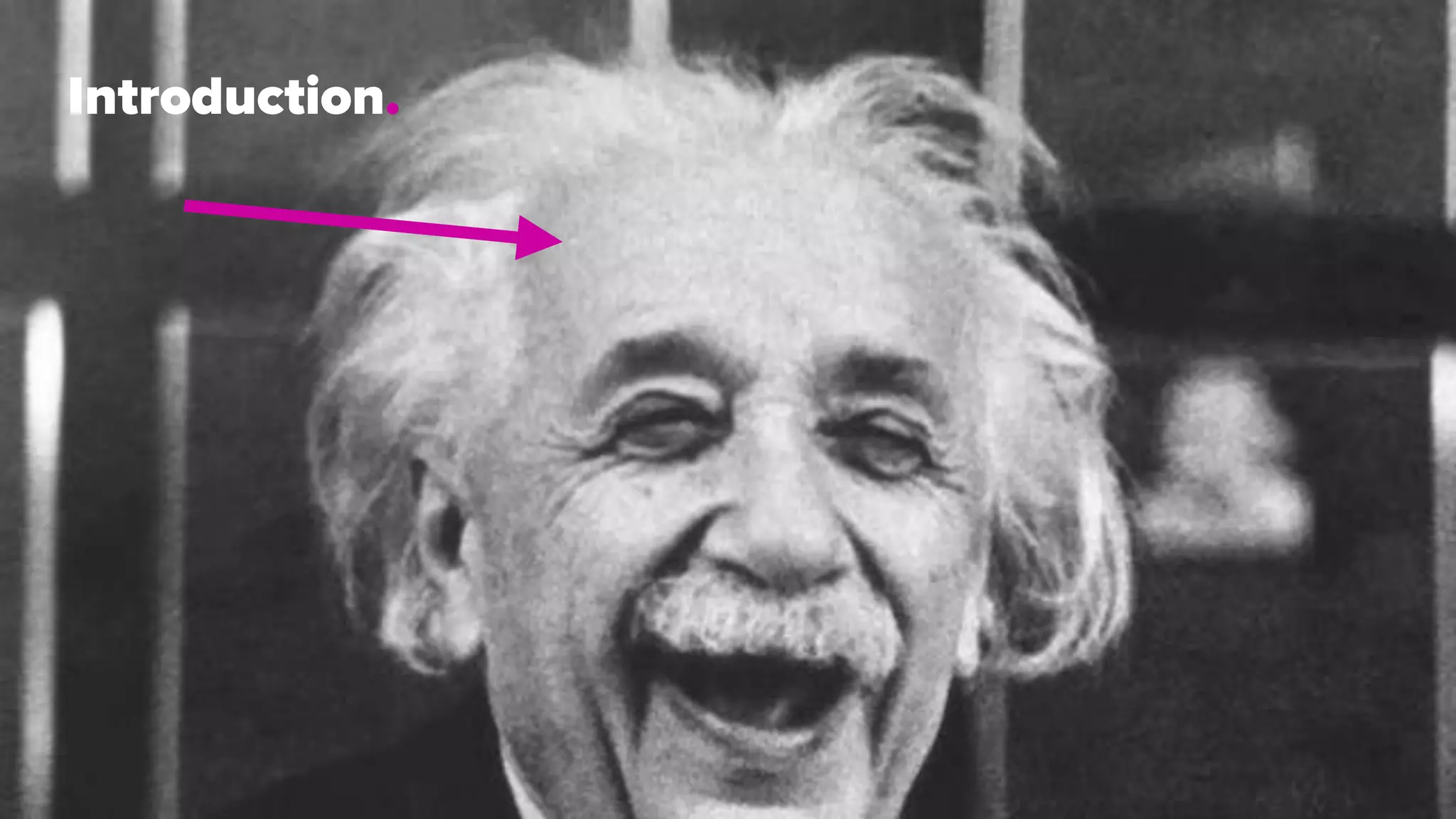
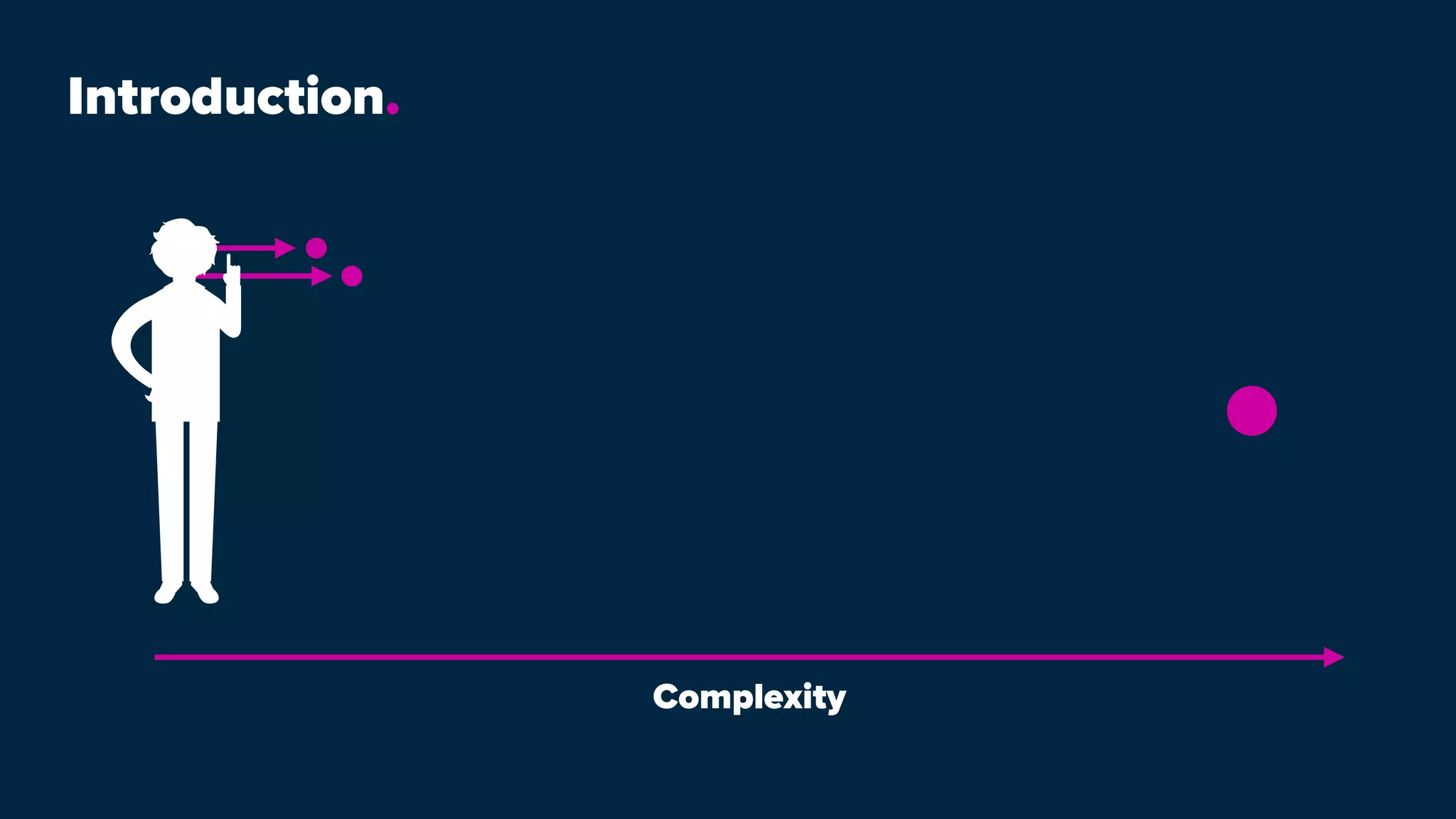
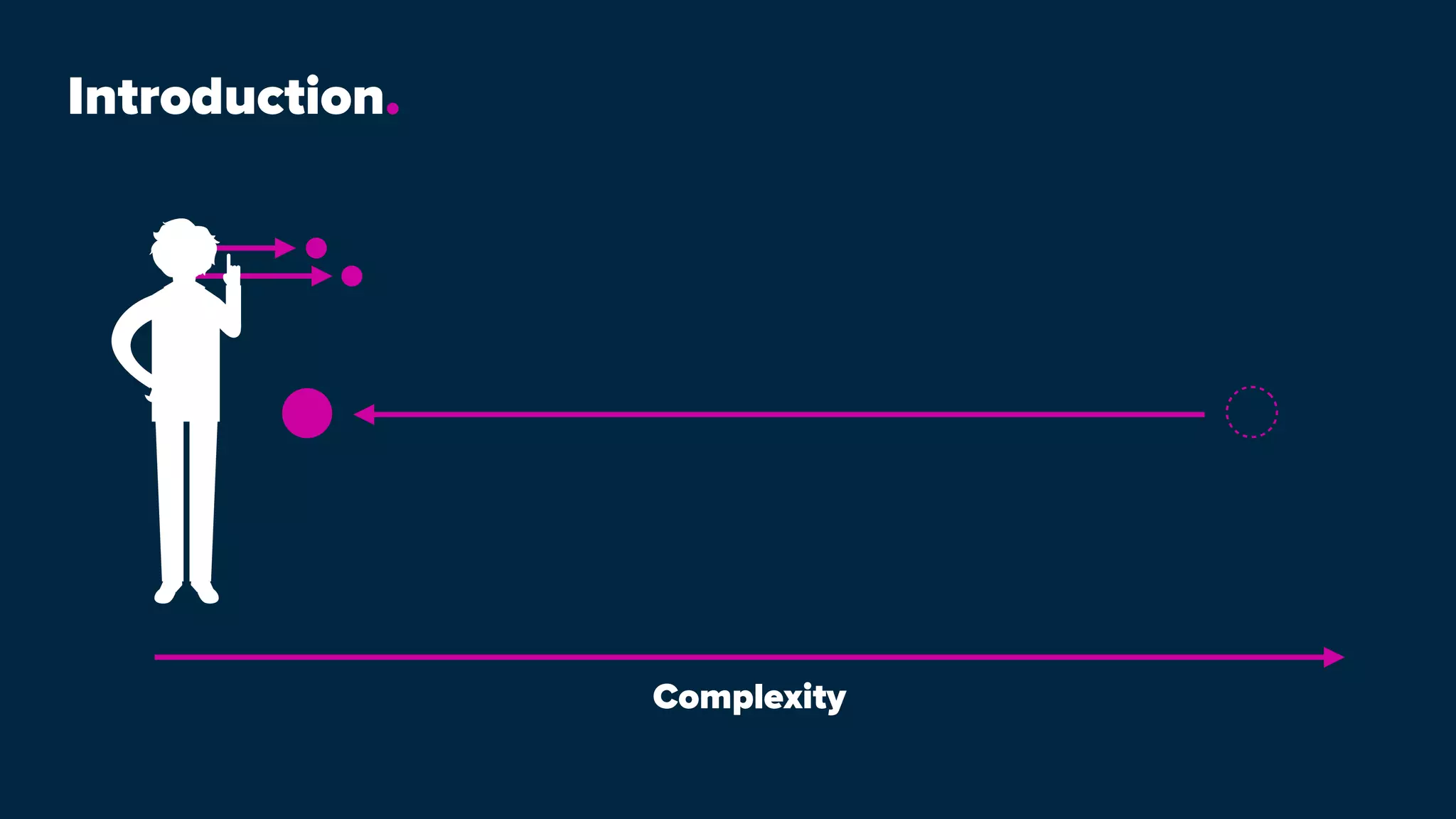

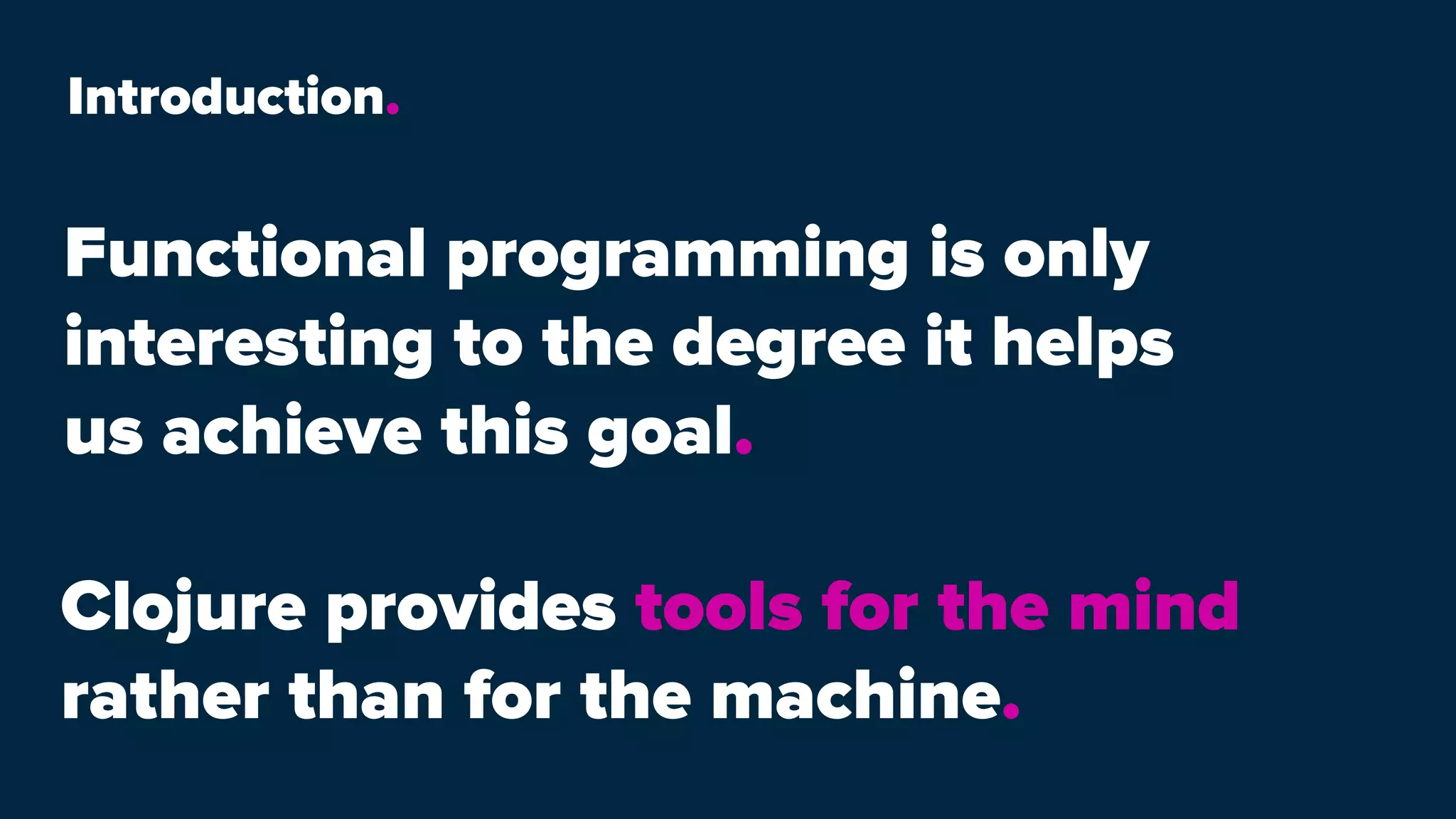
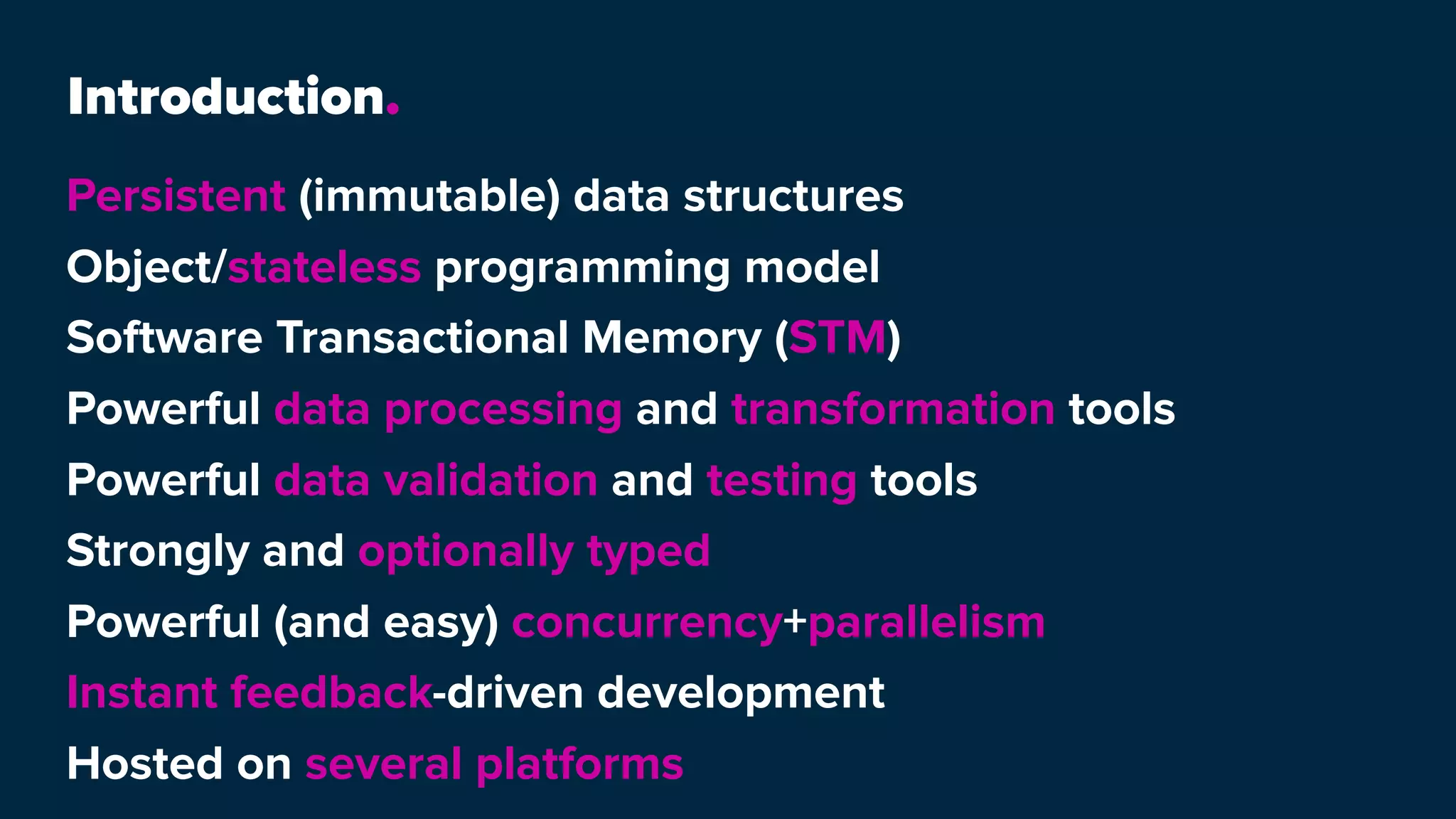
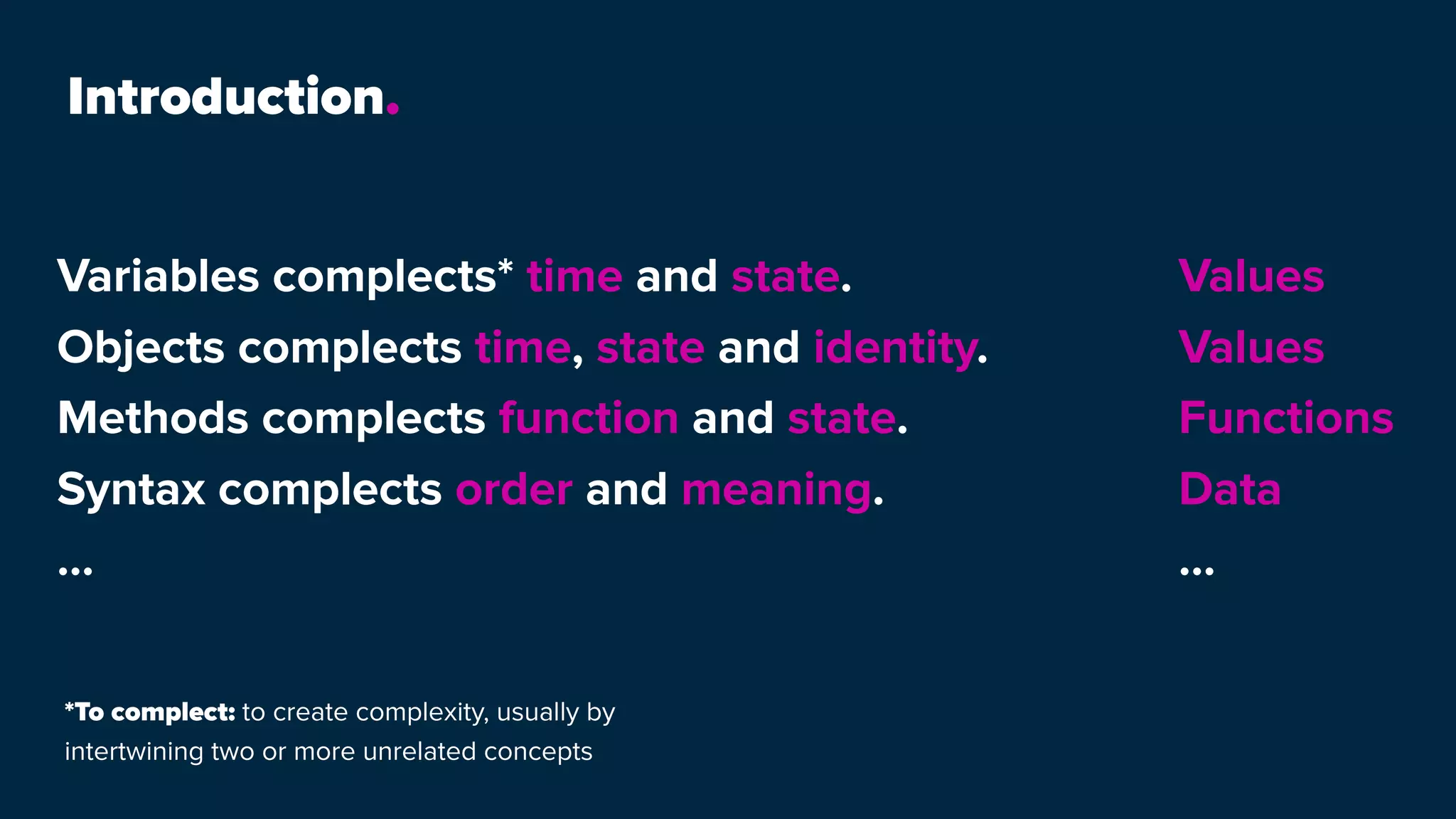
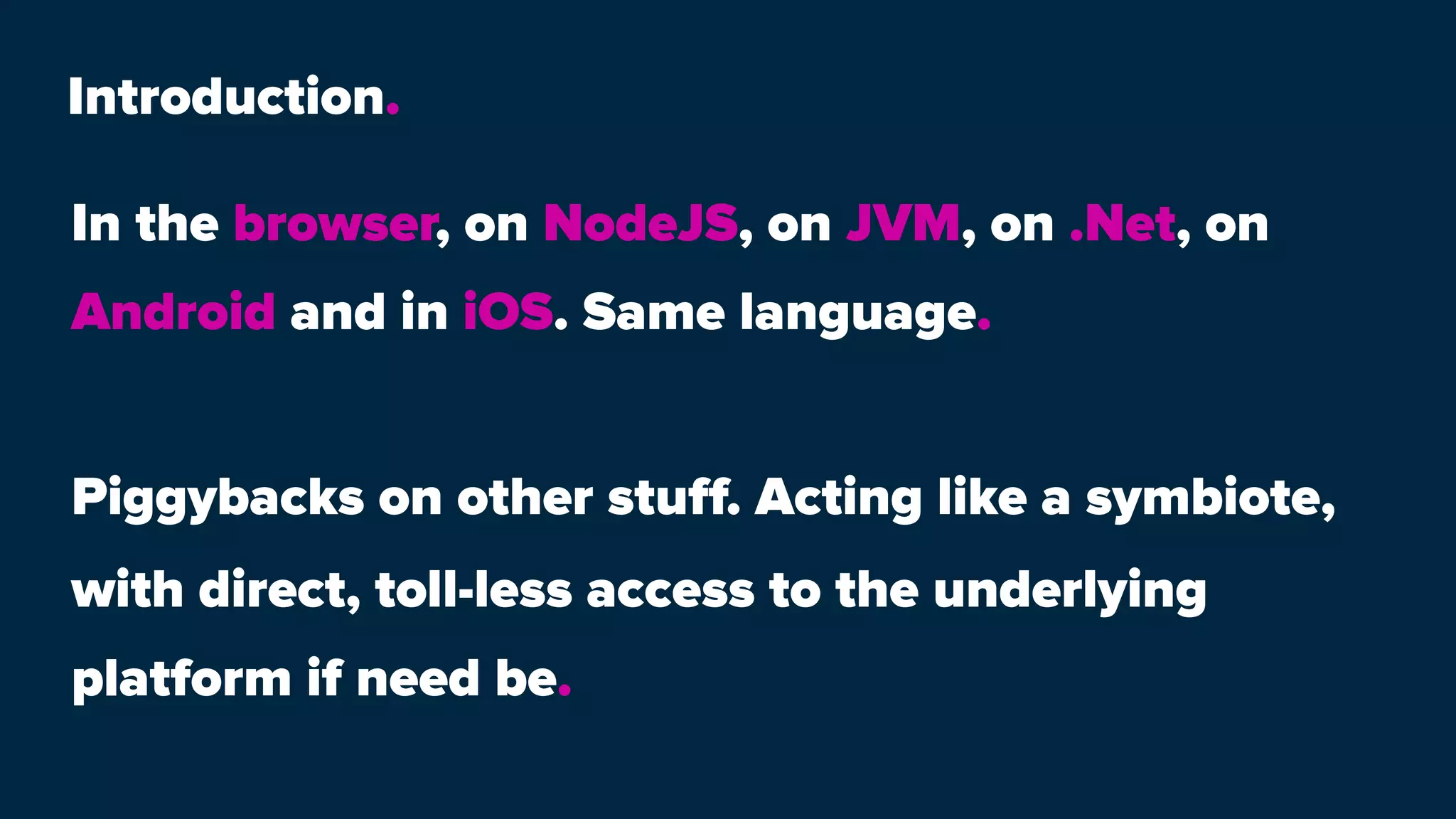
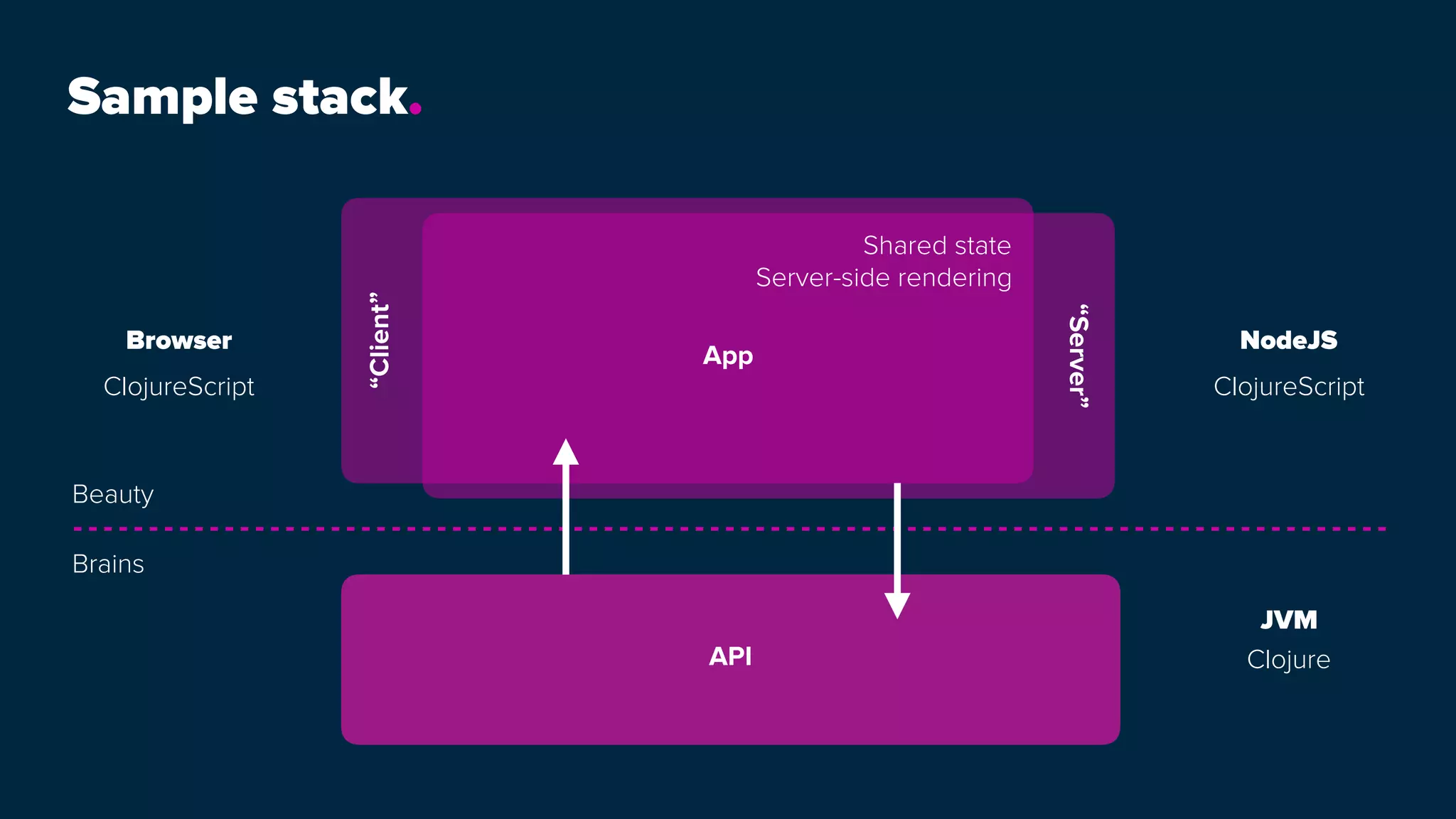
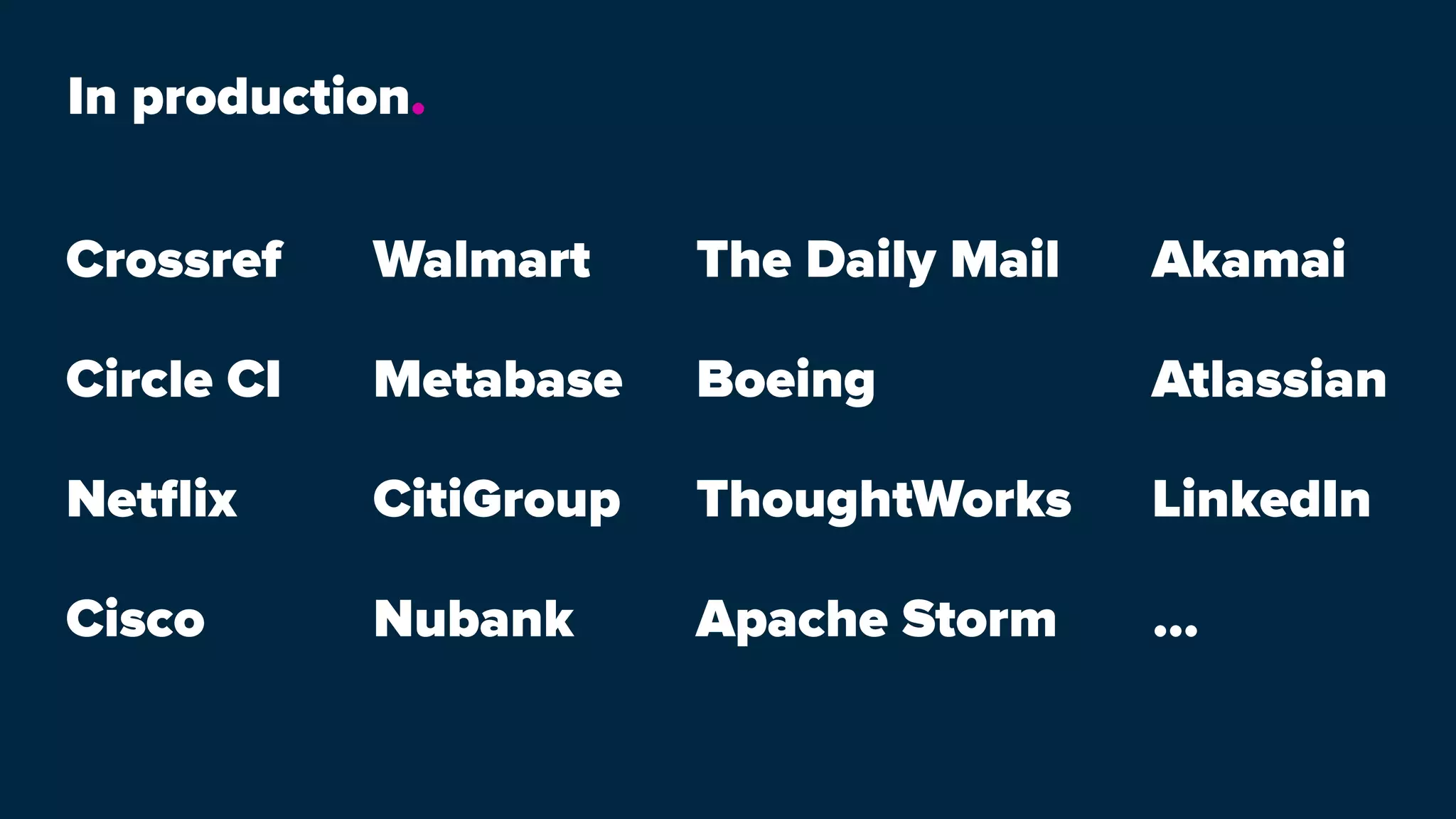
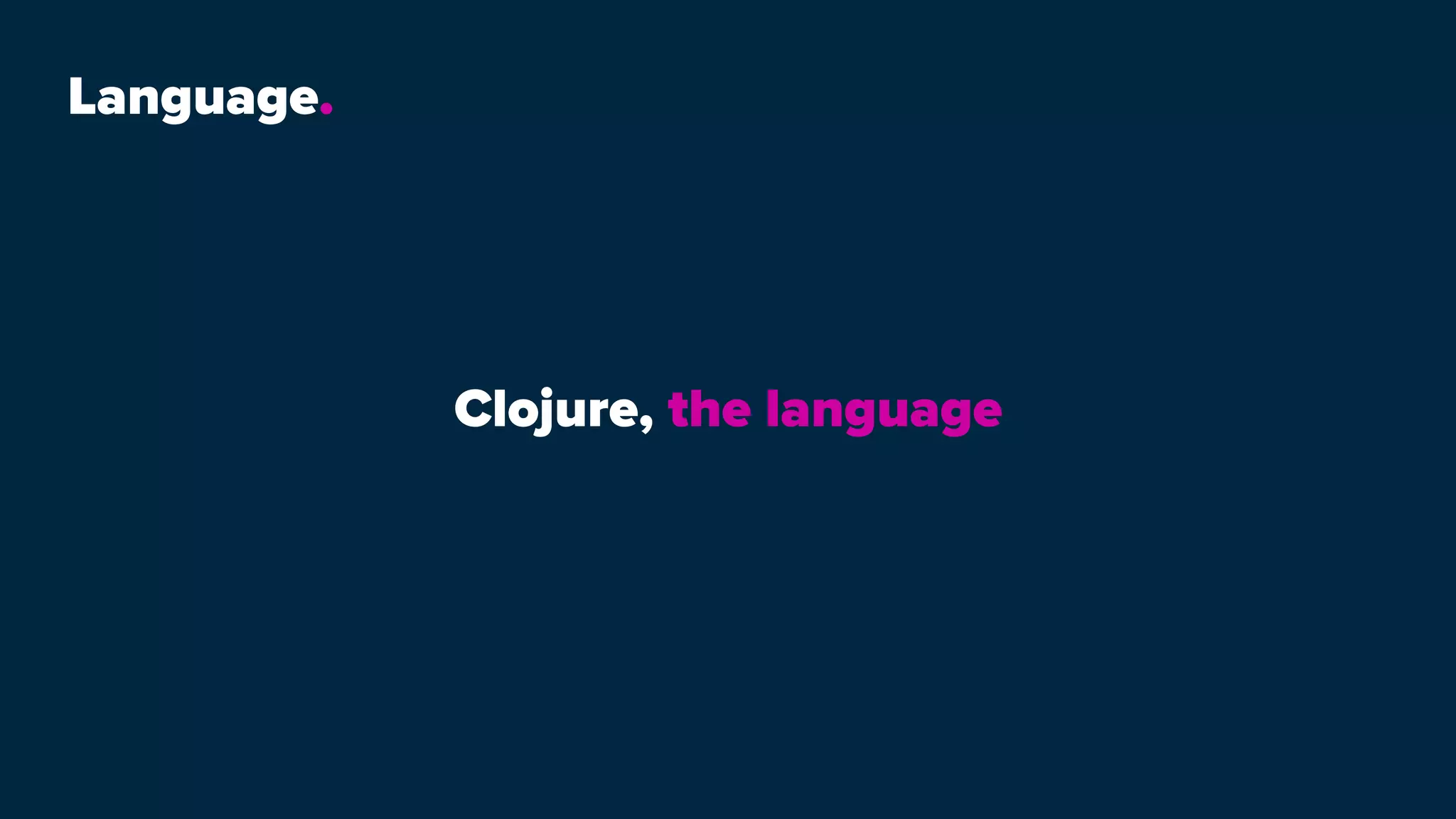
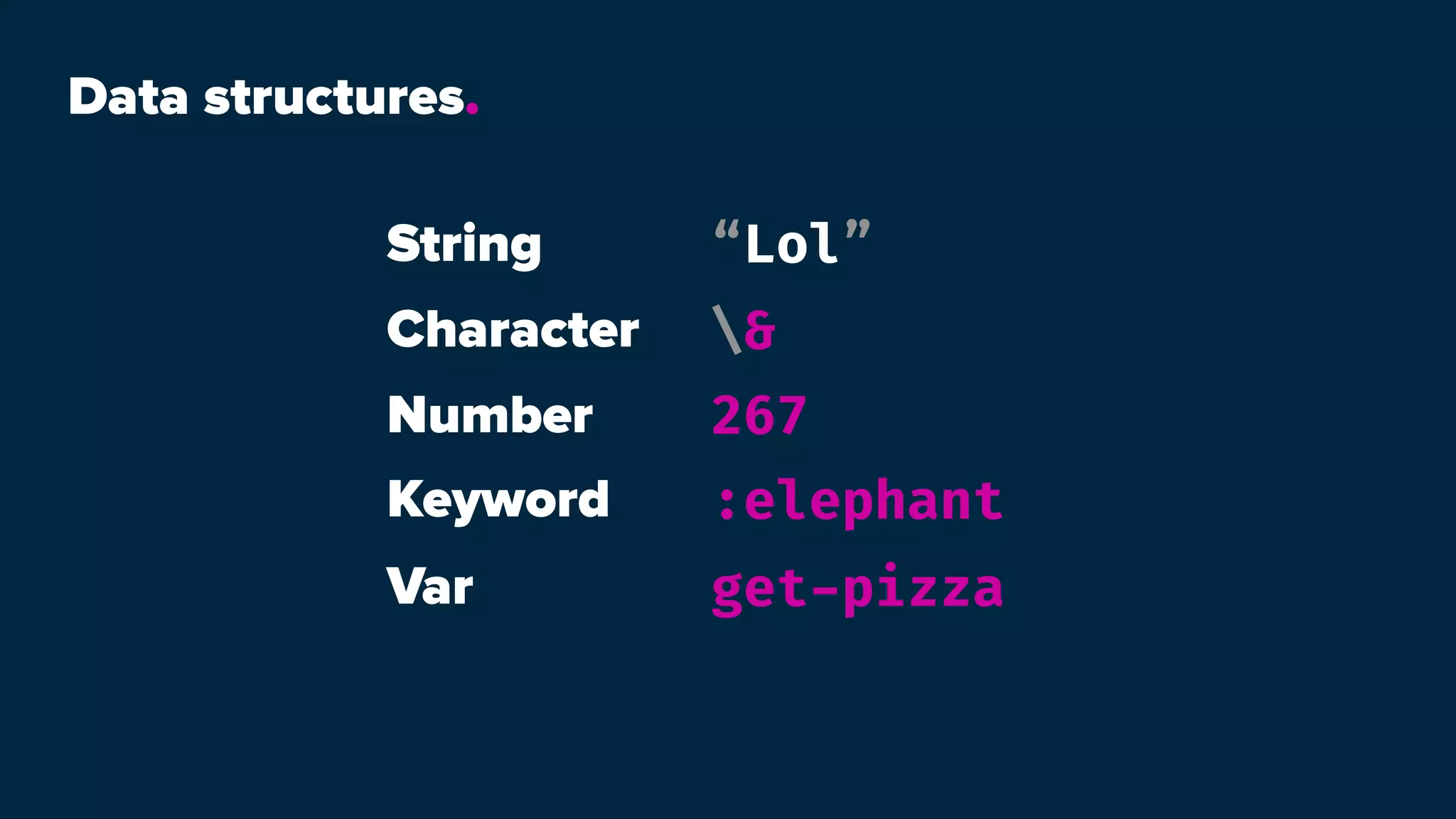
![List (1 2 3 4 5)
Vector [1 2 3 4 5]
Map {:hello “world”}
Set #{1 2 3 4 5}
Data structures.](https://image.slidesharecdn.com/clojure-170808092103/75/Functional-web-development-with-Clojure-16-2048.jpg)
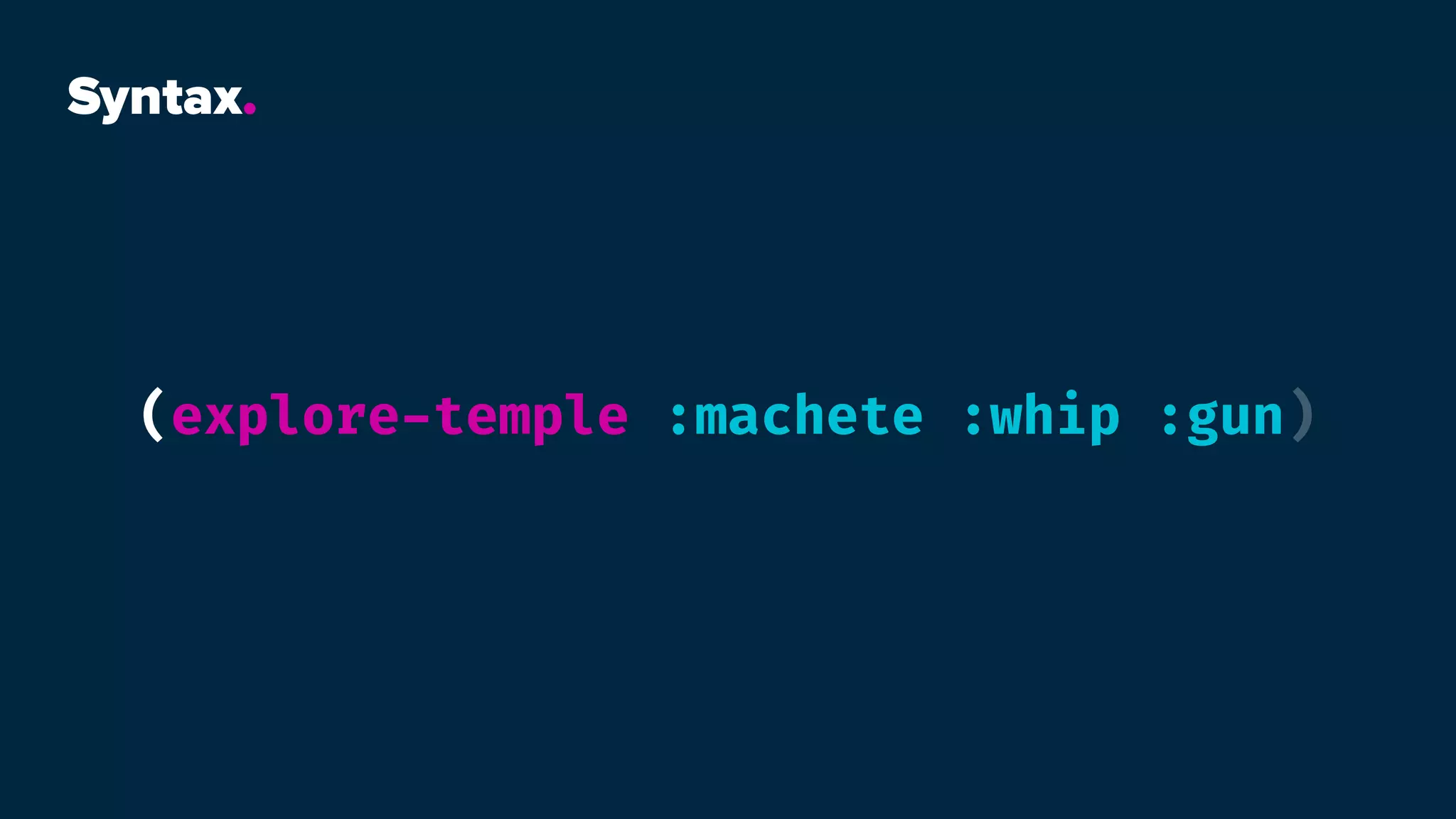
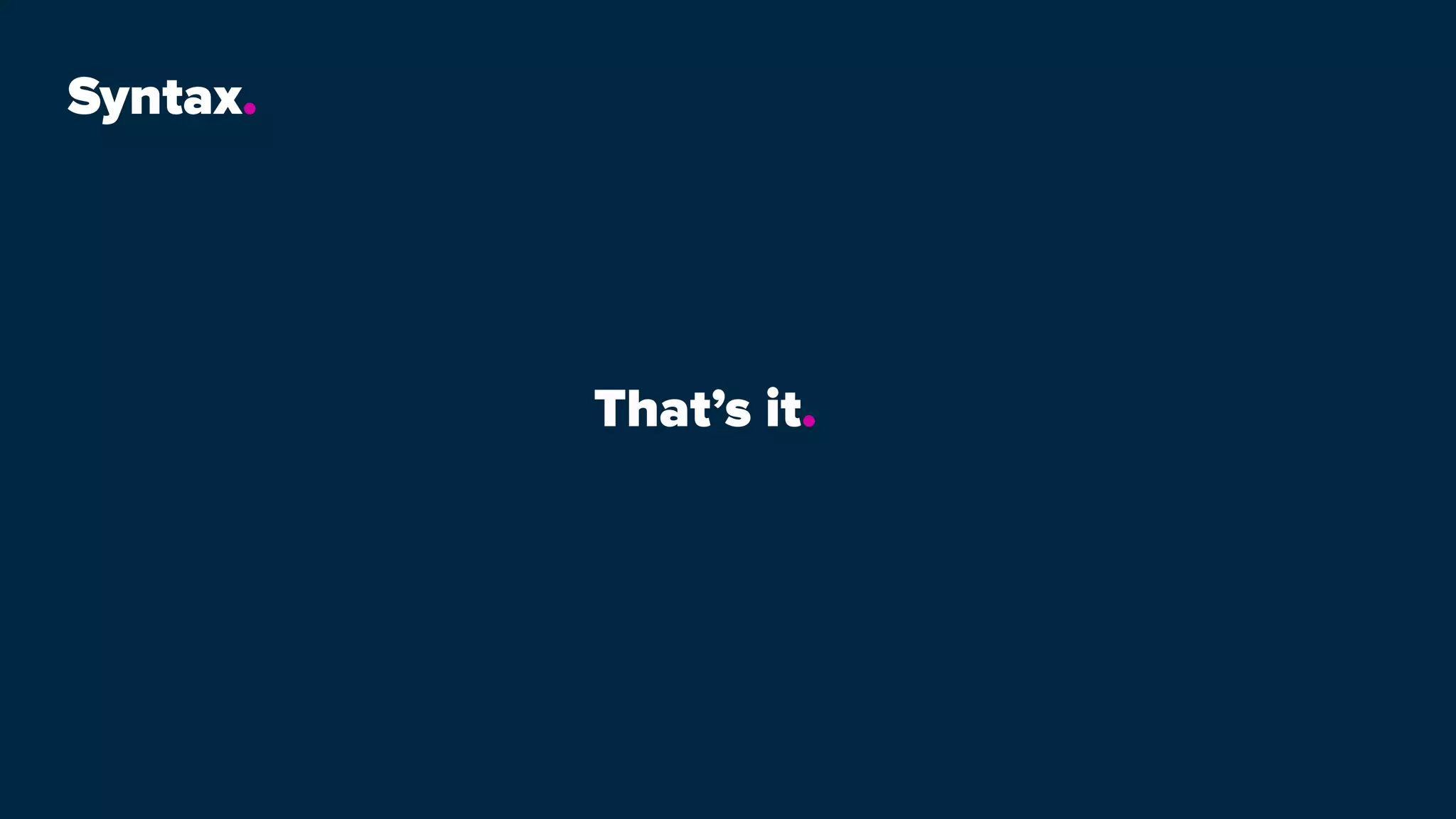
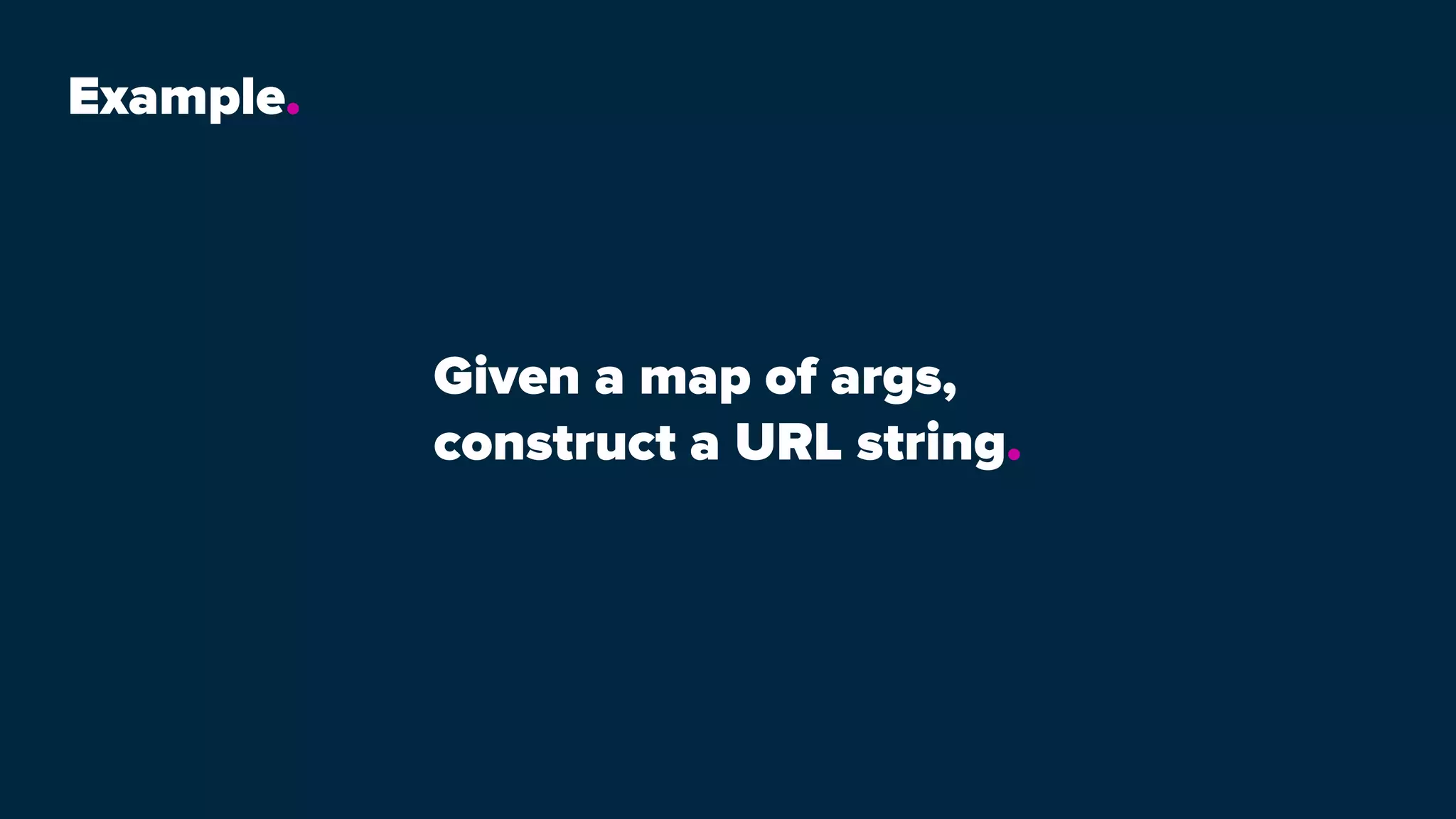
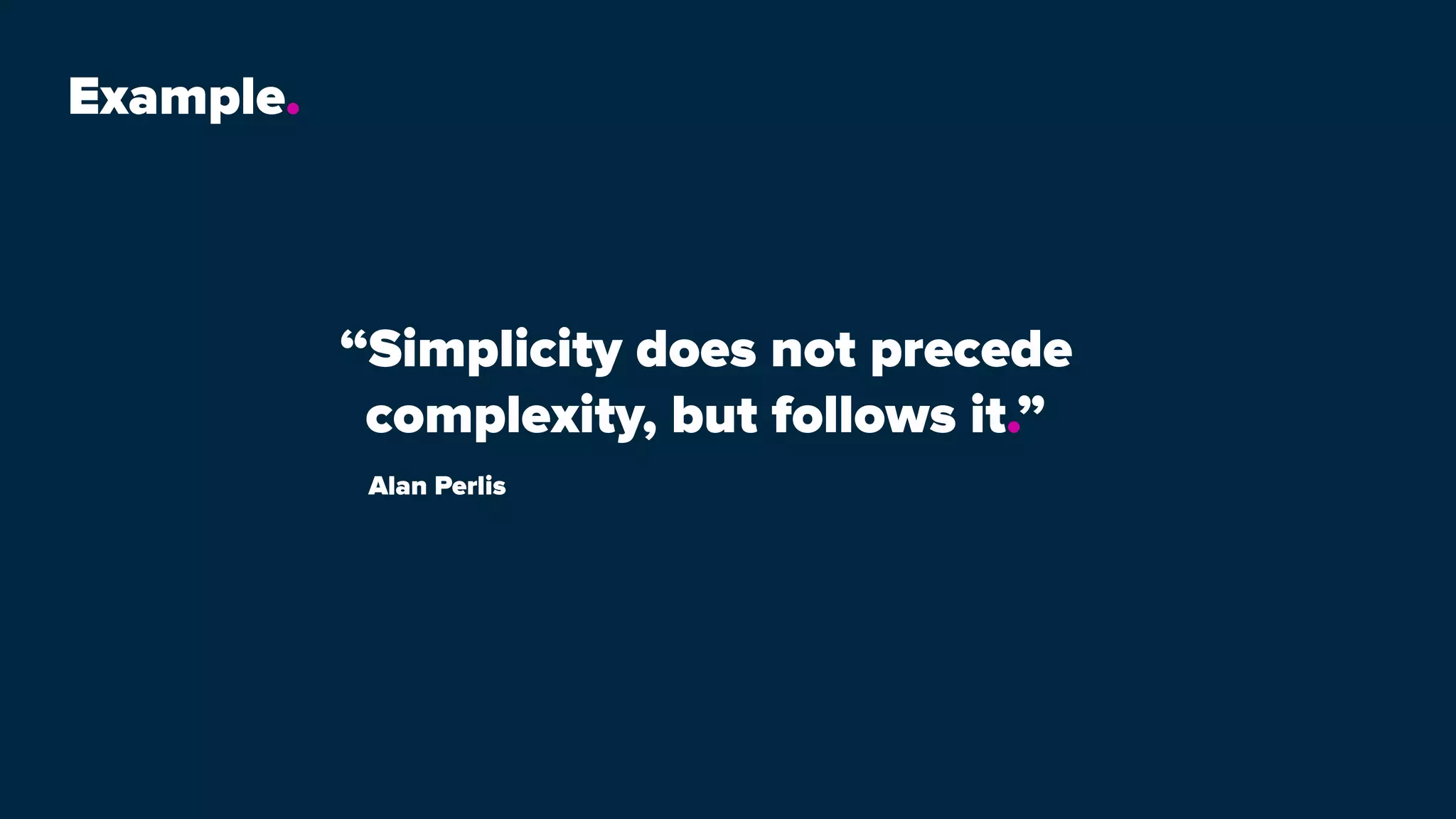
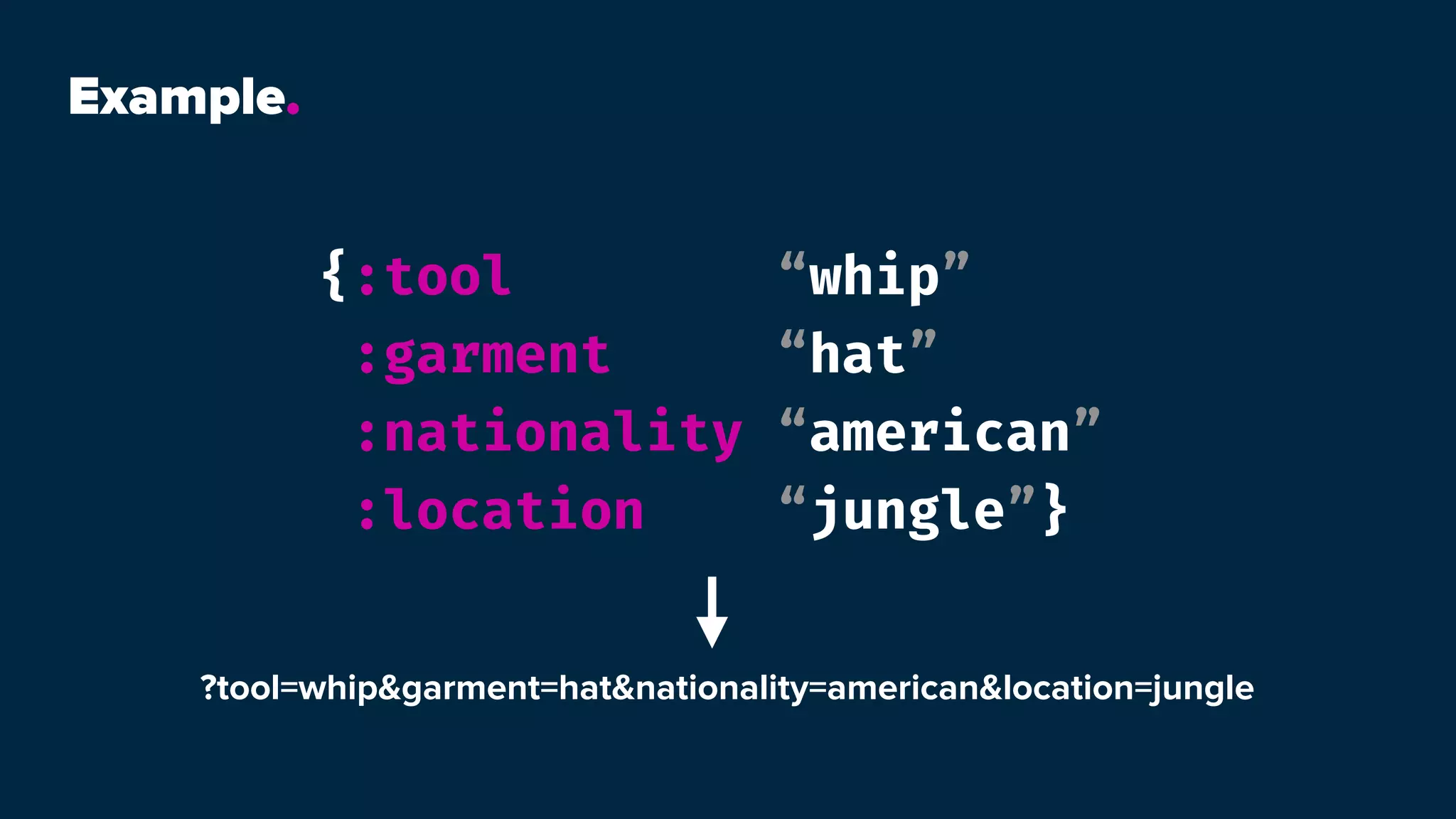
![First attempt.
(def args {:tool "whip"
:garment "hat"
:nationality "american"
:location "jungle"})
(defn stringify [arg]
(update-in arg [0] name))
(defn splice-eqal [[key-part val-part]]
[key-part "=" val-part])
( ->> args
(vec)
(map stringify)
(map splice-equal)
(interpose "&")
(flatten)
(apply str))](https://image.slidesharecdn.com/clojure-170808092103/75/Functional-web-development-with-Clojure-22-2048.jpg)
![Final result.
(defn format-arg
"Takes a vector of two items, where the first is
a keyword, which it turns into a string. It then
splices in an = between the two items, and fuses
them all together into a single string.”
[[key-part val-part]]
(str (name key-part) "=" val-part))
(defn make-string
"Takes a vector of args as strings, interposes ‘&’
between them and then mashes everything in it
together into a string."
[args]
( ->> args (interpose “&”) (apply str)))
(defn make-args
"Turns a map of args into a string."
[args]
(make-string (map format-arg args)))](https://image.slidesharecdn.com/clojure-170808092103/75/Functional-web-development-with-Clojure-23-2048.jpg)
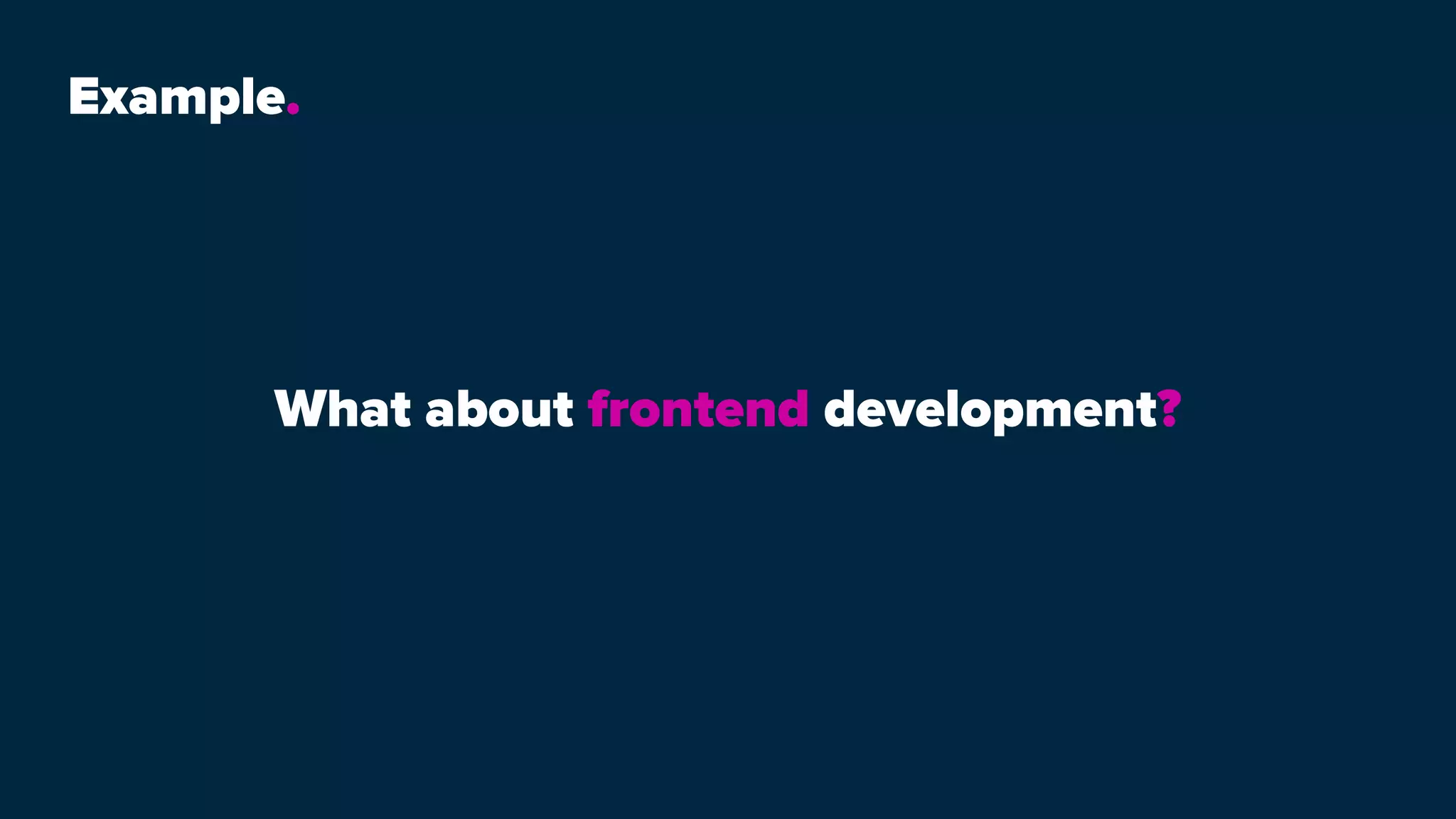
![Frontend development.
;; The state
(defonce app-state (atom 0))
;; Functions for modifying state
(defn increase-int []
(swap! app-state inc))
(defn decrease-int []
(swap! app-state dec))
;; The "template" for page content
(defn hello-world []
[:div
[:h1 (str "Current value in app-state: " @app-state)]
[:button {:on-click increase-int} "Inc"]
[:button {:on-click decrease-int} "Dec"]])
;; How we mount the "template"
(reagent/render-component [hello-world]
(. js/document (getElementById "app")))
The rendered result](https://image.slidesharecdn.com/clojure-170808092103/75/Functional-web-development-with-Clojure-25-2048.jpg)
